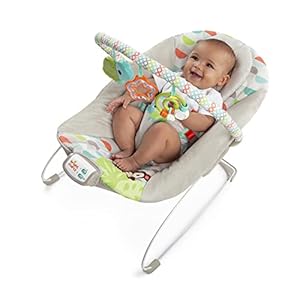
As you navigate the world of baby feeding, understanding the fundamentals is crucial. From knowing the benefits of breastfeeding to establishing feeding schedules and managing food allergies, this guide equips you with essential knowledge. But what about those tricky moments when your baby seems fussy or refuses to eat? Stay tuned to uncover practical strategies and expert advice that can help you navigate these challenging situations with confidence.
Breastfeeding Benefits and Tips
If you’re a new parent considering breastfeeding, understanding the benefits and tips can help you navigate this important aspect of caring for your baby. Breastfeeding provides numerous advantages for both you and your little one. Not only does it offer the ideal nutrition for infants, but it also contains antibodies that help boost your baby’s immune system. Breast milk is easily digestible, reducing the likelihood of constipation or stomach issues.
As a new parent, it’s essential to find a comfortable position for breastfeeding to ensure both you and your baby are at ease. Proper latching is crucial for successful breastfeeding, so don’t hesitate to ask for help from a lactation consultant if needed. Remember to stay hydrated and maintain a healthy diet to support your milk production.
Creating a breastfeeding schedule can help establish a routine for you and your baby. It’s normal for newborns to feed frequently, so be patient and responsive to your baby’s cues. Additionally, seek support from your partner, family, or friends to make the breastfeeding journey more manageable.
Formula Feeding Guidelines
When preparing formula for your baby, always carefully follow the recommended guidelines on the packaging to ensure proper nutrition and safety. Each brand and type of formula may have specific instructions for mixing ratios and water temperatures, so it’s crucial to read and adhere to these instructions diligently. Remember to wash your hands thoroughly before preparing the formula and use clean bottles and utensils to avoid contamination.
It is essential to measure the formula accurately to provide your baby with the right amount of nutrients. Avoid diluting the formula with more water than instructed, as this can lead to inadequate nutrition for your little one. Similarly, don’t use less water than recommended, as this can make the formula too concentrated and difficult for your baby to digest.
Always discard any leftover formula in the bottle after a feeding to prevent bacterial growth. Additionally, never microwave formula, as it can create hot spots that may burn your baby’s mouth. By following these formula feeding guidelines, you can ensure your baby receives the nutrition they need for healthy growth and development.
Introducing Solid Foods
To successfully transition your baby to solid foods, start by offering small amounts of single-ingredient purees. Begin with easy-to-digest options like pureed vegetables or fruits. As your baby gets accustomed to the new textures, gradually introduce a variety of foods to expand their palate. It’s essential to watch for signs of readiness, such as good head control and the ability to sit up with support.
When introducing solids, use a soft-tipped spoon and feed your baby in an upright position to prevent choking. Allow your baby to explore the food’s texture and taste at their own pace. Start with one meal a day and slowly progress to two or three meals as your baby shows interest and acceptance. Remember, breast milk or formula should still be the primary source of nutrition during this stage.
As you introduce new foods, pay attention to any signs of allergies or intolerances. Stay tuned for the next subtopic where we’ll delve into managing food allergies to ensure a safe and healthy eating journey for your little one.
Managing Food Allergies
To ensure a safe and healthy eating journey for your baby, it’s crucial to be vigilant in managing potential food allergies. When introducing new foods, start with single-ingredient items like pureed fruits or vegetables. This makes it easier to pinpoint any potential allergens. Always wait a few days before introducing another new food, observing any signs of an allergic reaction such as hives, vomiting, or diarrhea.
If you suspect an allergy, consult your pediatrician promptly. They may recommend allergy testing or keeping a food diary to track reactions. Remember that common allergens include milk, eggs, peanuts, tree nuts, soy, wheat, fish, and shellfish. Be diligent in checking food labels for these ingredients and their derivatives.
As you continue to expand your baby’s diet, gradually introduce allergenic foods one at a time. This cautious approach helps identify and manage any potential food allergies early on, ensuring a positive and healthy feeding experience for your little one.
Feeding Schedule Recommendations
For a smooth feeding routine, establish a consistent schedule that aligns with your baby’s natural hunger cues. Babies thrive on routine, so try to feed them at similar times each day.
Newborns typically feed every 2-3 hours, but as they grow, they may space out their feedings. Follow your baby’s lead and look for signs of hunger like rooting or sucking on their hands. It’s essential to be flexible and responsive to your baby’s needs as they may need more or less food at different times.
As your baby transitions to solid foods around 6 months, you can introduce a feeding schedule with three meals a day, along with breast milk or formula. Remember that every baby is different, so be patient and observe what works best for your little one.
Baby products














